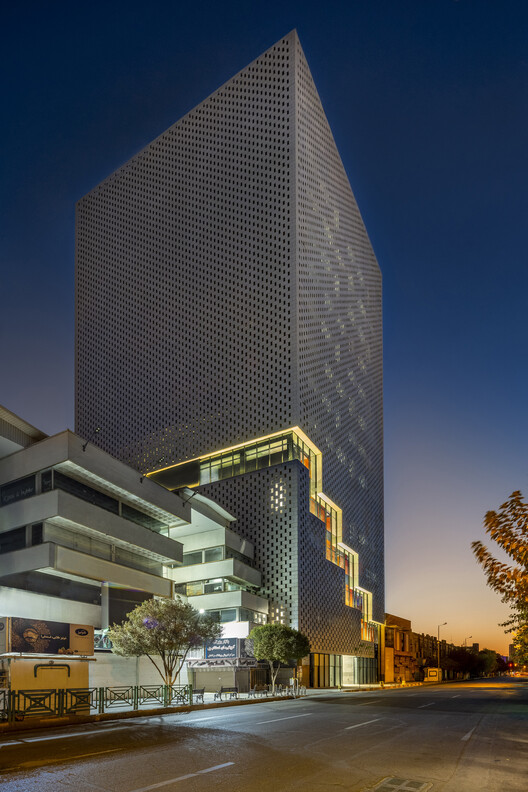
-
Architects: KRDS
- Area: 20000 m²
- Year: 2021
-
Photographs:Parham Taghioff
-
Manufacturers: AutoDesk, Reynaers Aluminium, Kale, GFRC, Knauf, Otis
-
Architectural Designer: Mohsen Yazdian, Shafagh Javidi, Mehdi Safi, Ehsan Dehghani, Mahsa Elahi, Sana Rastegar, Mohamadreza Piri, Maryam Saadat, Nrages Golchin, Ashkan Rafiey

Text description provided by the architects. Plasco was a 17-story building located at the heart of Tehran’s Downtown. This construction collapsed on 19 January 2017 during a high-rise fire. The building had a 15 stories tower in front and 5 stories separate building on the backside. The tower part burnt down completely during the fire and 16 firefighters and 6 others died during the fire, but the Backside building remained restored as it was. In Oct 2018, a design competition was held openly for designing a new Plasco building as a perdurable national monument. This design was awarded second place in the competition and after passing several assessments, it was selected for construction by the juries and client.


































